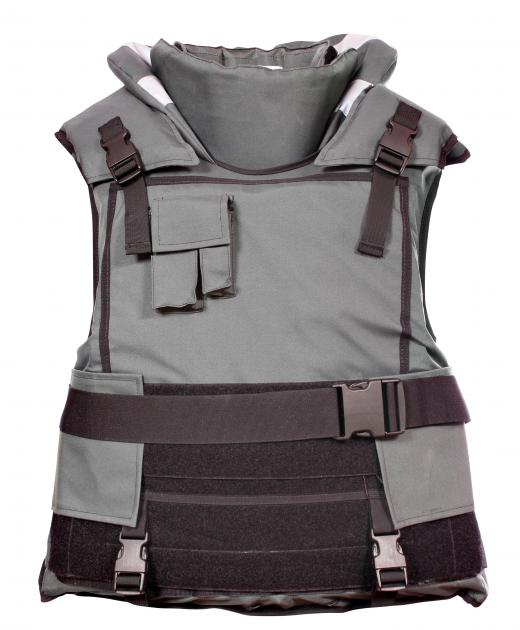Ballistic nylon is a material that was developed in the 1940s specifically for protection and abrasion resistance. Best known for being used in flak jackets for military troops, this thick synthetic fabric has been used in many applications over the years. It has been used in other types of protective jackets and for things such as luggage, utility belts and watch straps.
Protection for Military Personnel

This material was developed during World War II. The idea was to create an industrial-strength nylon material that would provide protection for troops serving in combat areas. The task was taken on by DuPont, a chemical company in the United States, which tried several weaves and formulas before coming up with a durable nylon that could be used to create the flak jackets worn by a number of U.S. airmen beginning in 1942. The main purpose of these stronger jackets was to help deflect shrapnel and other types of flying debris that resulted from gunfire and artillery shell explosions within the immediate area. Given the intended purpose for the nylon product, the material was dubbed ballistic nylon, with emphasis given to its ability to repel other materials.
Missing the Mark

This material, however, did not prove to be as resistant as had been hoped. The nylon was unable to protect the wearer from bullets fired from pistols or rifles. Later products proved to be much more successful when it came to developing bulletproof vests and similar clothing that would protect the entire body.
Many Other Uses
Still, ballistic nylon was a durable material, and it could be used for many other purposes. One of the first other uses found for it was as luggage reinforcement on the interior of a suitcase or steamer trunk. In addition to the additional strength, the fabric was easier to clean than some of the other choices for lining that were in use at the time. As soft-sided luggage became more popular, ballistic nylon proved to be perfect for the shell as well as the interior lining of these newer and lighter pieces of luggage. Modern carry-on luggage and gym bags are often made of this material.

Modern motorcycle jackets are also often made from it, as are many of the tool belts that are used by around-the-house handymen and professional construction workers. This form of nylon also is used in many types of sports equipment. For instance, many kayaks are framed with a skin of ballistic nylon that is treated for water resistance. The material has been shown to hold up very well as a kayak skin and is quite cost effective when the time comes to replace it.

